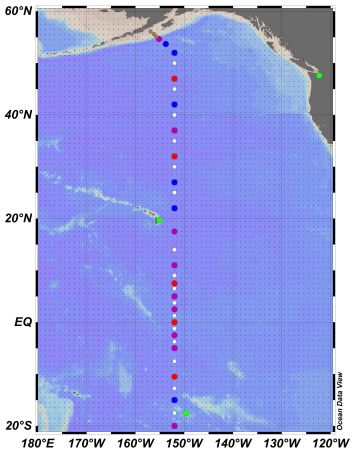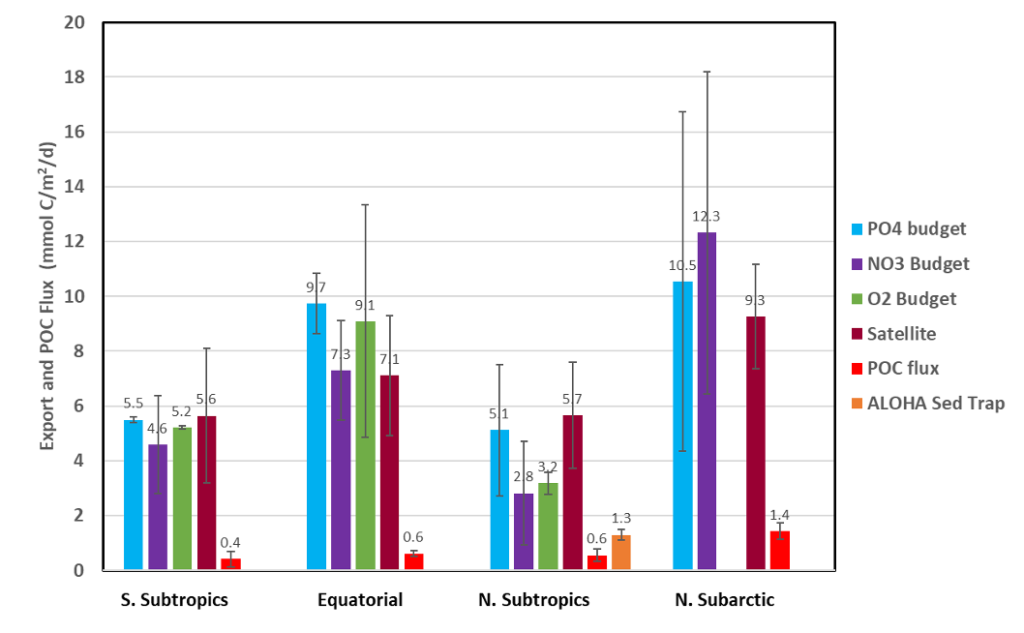Organic matter export rates along a North-South Pacific Ocean section: what three estimating methods tell us
Quay and his colleagues (2025, see reference below) present estimates of the Organic Matter (OM) export rate based on surface budgets of nutrients (PO4 and NO3) and dissolved oxygen (O2) in the North Pacific Ocean during the GEOTRACES GP15 cruise between 50°N and 20°S. Export rates estimates are highest in the subarctic and equatorial regions and lowest in the subtropical gyres with rates generally correlating with surface chlorophyll concentrations. The same regional trend is observed for export efficiency. Independently, OM export rates were estimated based on satellite productivity models and showed similar regional variations as the budget-based export with the satellite rates being strongly dependent of the selected productivity algorithm. When compared to estimates of particle sinking flux during GP15 the budget and satellite OM export rates were up to an order of magnitude higher. These differences likely reflect the significant export of organic matter via dissolved OM and zooplankton migration in the oligotrophic subtropical gyres and the longer (months) integration times for the budget-based estimates than for particle sinking fluxes (weeks) in the subarctic region.
Reference:
Quay, P., & Stephens, M. (2025). Regional Patterns of Organic Matter Export Rates Along the GEOTRACES Pacific Meridional Transect GP15. Global Biogeochemical Cycles, 39. Access the paper: 10.1029/2024gb008277


